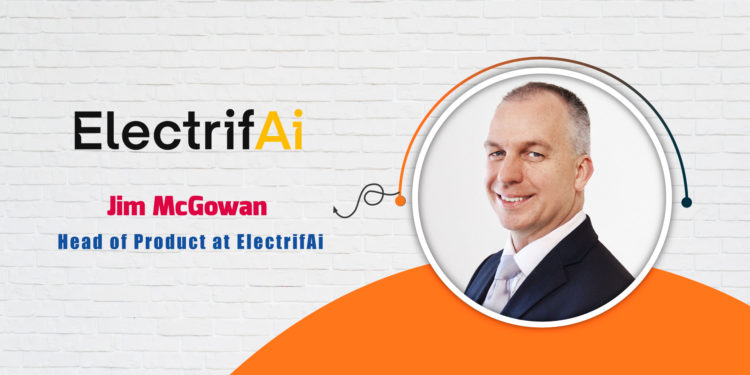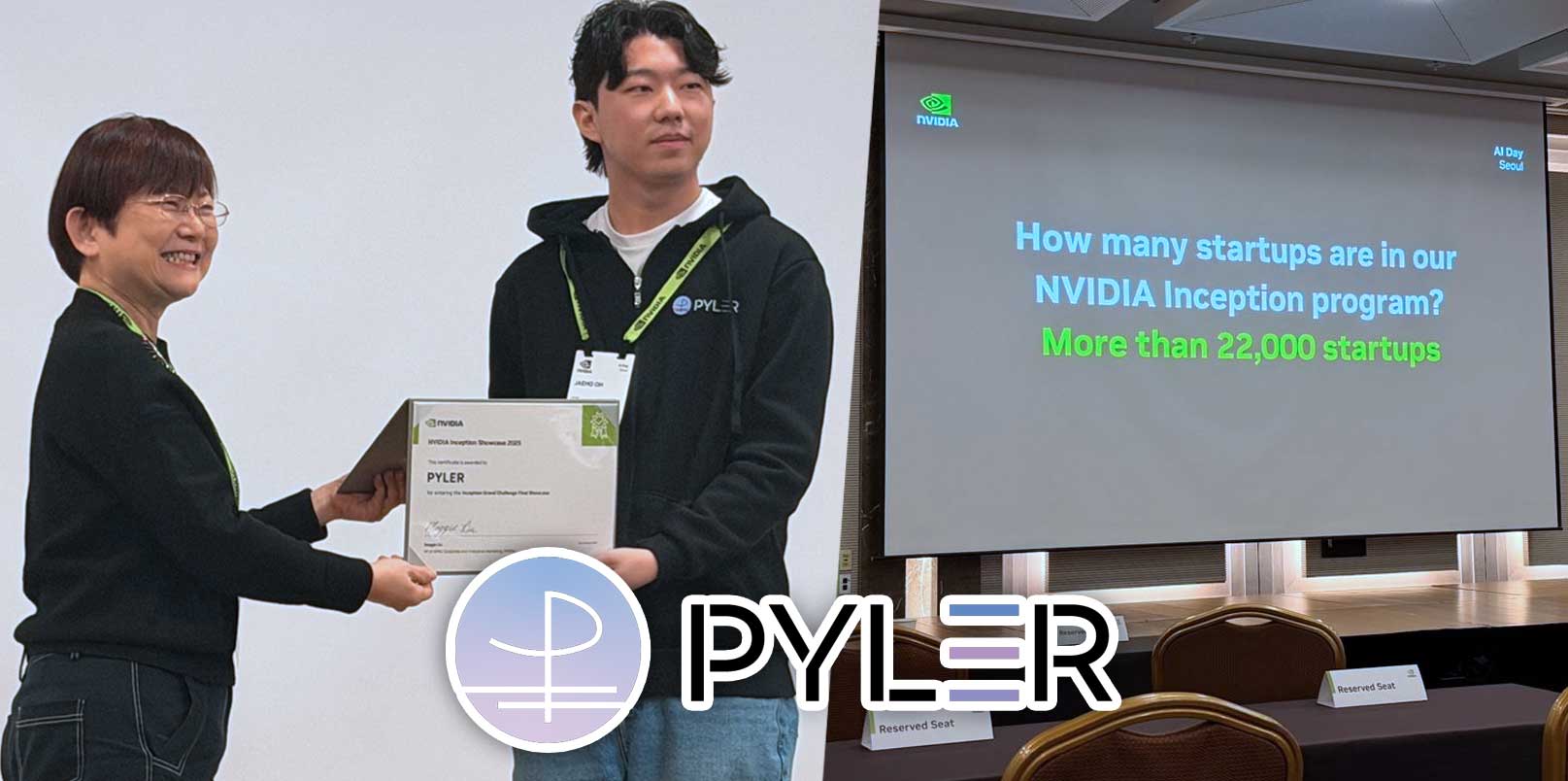This article was first published on our media partner site aiTechPark.
Jim McGowan, Head of Product at AI-based business intelligence (BI) tool discusses how ML can distill revenue data accurately to analyze spends.
1. Can you tell us about your role at ElectrifAi?
I have two roles at ElectrifAi. One is as the SVP of Cloud Partnerships. I work to get our solutions into partnerships with cloud providers and building relationships there. I’m also Head of Product working with the Marketing team and our Subject Matter Experts in understanding what is best for us to build, and how to prioritize.
2. Can you tell us how you came to be in the AI tech space?
My journey into AI and ML began in the late ’90s. I worked on a doctorate in technology very similar to neural networks. It was more primitive and there was less compute power. I took that and went into Bell Labs for over 15 years working on many different types of technology. Over that time, big data went mainstream and AI started to deliver practical results to businesses. I went to the startup community in New York, helped companies leverage AI and ML. There were many, many companies working with AI, but ElectrifAi was making the most business impact, so I came here.
3. In what way do you think AI/ML technologies have advanced?
There’s been a tremendous change in the amount of data that people can leverage. It’s not just the number of places storing petabytes. That’s part of it, but what really made a change is the amount of data that’s marked up and annotated, so models can be taught by example. For example, there are only incremental changes in voice recognition technology from the 1970s to the first smartphones. The performance improvement is due to large corpuses of annotated voice data used in training. That was the breakthrough that enabled the technology to finally work. Yes, the technologies have changed, but the amount of data has changed 10 times more than that.
4. How would you say AI helps in making better budget allocation decisions when it comes to investments?
You get much more data, and that data is filled with the information you need to make better decisions. The problem is that you now have more data than any person can possibly view, let alone consider and interpret.
You need to have some way of distilling the data down to something meaningful. But who decides what’s meaningful? AI is a way of taking what people and experts have determined is meaningful, and automating it at scale. Machine learning has massively amplified that process, by marrying the large data to real past outcomes. The algorithms tune to patterns far more complex than even the experts can consider. Built correctly, these algorithms highlight areas for the expert to consider. So, the expert spends time making informed decisions, rather than poring over endless stacks of tables and charts. AI directs attention.
5. What role is predictive analytics playing in accelerating revenue cycles?
Predictive analytics is amplifying the efforts of auditors, allowing them to be far more efficient, and removing a lot of the errors and guesswork involved in capturing revenue. It’s giving payors and providers much better insight into what’s happening, and moving the decision points up in the process. What does that mean? That means pay-and-chase will eventually go away, and people can analyze their spends much earlier in the process.
6. Why is it important that brands use ML for CX and personalization?
It’s absolutely essential. Consumers have completely changed their mindset.
MANY CONSUMERS WITH DISPOSABLE INCOME HAVE GROWN UP WITH THE EXPECTATION THAT THEIR EXPERIENCES WILL BE PERSONALIZED. THEY’VE SEEN IT WORK AT MANY PLACES. IF IT’S NOT WORKING AT YOUR COMPANY, IT’S A PROBLEM, BECAUSE YOU ARE BEHIND.
The corporate world and consumers are not forgiving of companies that fall behind. If you’re not using machine learning to drive your personalization, it’s not going to really be personalized.
After all, why did companies historically collect demographics? Because they were trying to personalize your experience at a very blunt level. What machine learning does is it allows somebody to see you with far, far greater resolution. If you’re only looking at age ranges and rough income level, you’re not even in the game anymore. Rules-based systems are better, but not by much. ML constantly tunes itself to the consumers and their actual behavior. Rules-based systems are a way of automating what someone thinks is driving consumer behavior. ML is tuned to the actual behavior. It’s far more powerful.
7. ElectrifAi recently launched SpendAi. Please share some details about what this means for CPOs like yourself?
What SpendAi does is important and it’s changing how you can manage your vendor relationships and spend across your entire organization, in a single view. You can drill down and slice the data in any way imaginable.
SpendAi starts by understanding where you spend with much greater accuracy. In current systems, people are happy if 70% of their spending is correctly categorized. What we’re doing in machine learning is to reach 98% or more. So there’s more clarity right away.
We then align your vendors correctly, so typos and alternative spellings are correctly grouped to the true vendor. We also know the parent-child relationships, so you can tell how much you’re really spending with a single organization. Now you realize that you have much more leverage over some vendors or that you rely too much on a small set of vendors for certain items.
Then we offer ContractAi, which pulls critical terms directly from your contracts, independent of the format or style the contract is written in.
This allows you to hold a very detailed view of your spend up against the contracted terms, so you can see what did happen and what should have happened. We then use ML to suggest how to close the gap between the two.
Third-party data can easily be pulled in, so you can consider things like vendor financial risk when determining whether you should reduce your number of vendors or not.
All of this is automatic and point-and-click. And, it’s particularly useful in mergers, across disparate tech systems coming together. There’s a lot more we could say. The tool is quite powerful.
8. What advice would you like to give AI tech startups?
Be brutally honest with yourself about what you do well. And, brutally optimize where you spend your time. There’s a rush, often in technology startups, to feel you’re doing something if you’re writing code. Code is the enemy. Every bug you’ve ever had, everything that’s broken in your system, every deployment problem you’ve had, that’s all due to code. You should be trying to work as much as possible with all the wonderful managed services and things you can buy off the shelf. Focus on what you do well and where you add value, not on coding for coding’s sake.
The world has changed. It’s not just enough to say that you’re now on the cloud. Because that used to be new. Or, that you’re using advanced DevOps. That used to be new, too. You need to leverage managed services that do things better and cheaper than you will ever be able to do and it’s not where you differentiate yourself.
IF YOU’RE BRUTALLY HONEST ABOUT WHERE YOU EXCEL, FOCUS JUST ON THAT PART AND PUT IT IN THE WORLD IN THE WAY THE WORLD CONSUMES IT. THEN YOU HAVE THE BEST CHANCE TO GET PEOPLE’S ATTENTION WITH YOUR PRODUCT.
9. What digital innovation in the AI tech space do you think will make a mark in 2020?
The excesses of the past – building your own expensive teams for niche areas – will be gone. The pandemic has greatly accelerated cloud adoption and forced companies to slash expenses ruthlessly. So you’ll see people doing more with less – managed services, low code, and outsourcing to people who can operate at scale by specializing in one thing and doing it well.
Big data programs that weren’t returning value will be gone and will not return. In 2000, companies had their own teams for building websites. Then the dotcom bubble burst and those teams were gone. Now most companies don’t run their own webshops. It’s far more efficient to go to the outside. You get a better product at a better price with lower risk.
The same thing is happening with machine learning. Businesses will want much more clarity on where their money is going, and whether there is a real ROI.
OUTSOURCED DATA SCIENCE WILL GROW EXPONENTIALLY. IN-HOUSE TEAMS WILL BE UNDER TREMENDOUS PRESSURE TO PERFORM. THE HERD OF TOOL-MAKERS WILL THIN, WITH FEWER PEOPLE BUYING. THERE WILL STILL BE A TREMENDOUS AMOUNT OF MACHINE LEARNING AND AI. BUT IT WILL PROVIDE REAL, MEASURABLE VALUE TO THE BALANCE SHEET. AND, IT WILL BE OUTSOURCED BY MOST COMPANIES.
10. What are some of the major developments that ElectrifAi is planning?
We’ve been amassing a tremendous catalog of prebuilt, ready-to-ship, proven-in-the-field machine learning models. And, we’ve put them together into impactful use cases that address real business needs. These don’t just provide insights – they give specific, actionable steps a business can take to achieve the critical goals of slashing costs, growing revenue, reducing risk, preventing fraud, and many more. We’re packaging this as the most flexible, easy-to-integrate software for integrators and enterprises around the globe. There’s nothing like it in the market. No one else has the history and depth to create this library.
11. Which movie inspires you the most?
‘Blade Runner’, based on the novel ‘Do Androids Dream of Electric Sheep’. My background is in cognitive science, technology and psychology. Philip K. Dick exposes how incredibly intimate the merging of those fields can be, and how the issues in those fields overlap. It’s very interesting the way he unfolds ideas around identity, the theory of mind, automation, and many other topics. His ability to synthesize disparate topics into a relatable story is inspiring.
12. Can you tell us about your team and how it supports you?
My team is amazing. I think everybody we work with gets it. That there’s something here that’s really very different and if we line this up correctly, its explosive opportunity. People here get that. I’ve worked in places where people think they have a great idea, but the first speed bump they hit makes them rethink everything. That’s not what happens here. We plow through things. We get in rooms with people from a dozen successful companies every day, and they get the vision and see the execution.
13. ElectrifAi is known to have a very joyful work culture. Would you like to share some fun pictures of your workplace?
Our workplace is our homes now! It’s great to start a meeting and see someone’s office, or maybe their kitchen where they’ve set themselves up for work. Our pictures are people on Zoom bringing their home life into work.
PEOPLE THOUGHT WORKING FROM HOME WOULD CUT DOWN ON THE INTERACTIONS BETWEEN PEOPLE, BUT IT’S BEEN THE OPPOSITE. WE ALL SEE A BIT OF EACH OTHER’S LIVES ON EACH CONFERENCE CALL.
14. Can you give us a quick glimpse of the applications you use on your mobile phone?
I use Nebo on an iPad and phone, because I take many notes. My handwriting is horrible, so really good recognition is a big need. I definitely need Pandora and YouTube, but other than that, I have a bunch of applications I almost never look at.
– Caroline Hynes

Jim McGowan, Head of Product at ElectrifAi, leads the company’s efforts to partner with cloud providers to bring practical AI solutions to the Fortune 500, federal and state sectors. Jim has over 20 years of experience putting highly innovative and disruptive technologies into the market at scale. Jim started his career at Bell Labs making seminal contributions to voice-over-IP (VoIP) and mobile networks. He successfully led an industry effort to make his patented voice algorithm a required component in all smart phones. After building a successful outward-facing consulting program, he was tapped to be the technology lead of Bell Labs’ largest modern-day project, a cloud-based video conferencing system. He then joined the AI/ML start-up community in various leadership roles, most recently as CTO of an event ticketing startup, where he led the global technology, product and AI divisions, creating the industry’s largest big data program.





